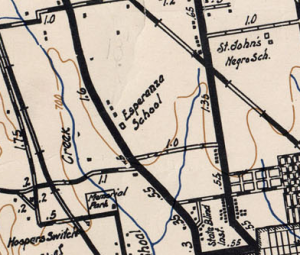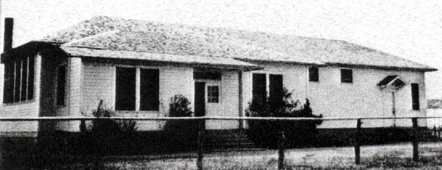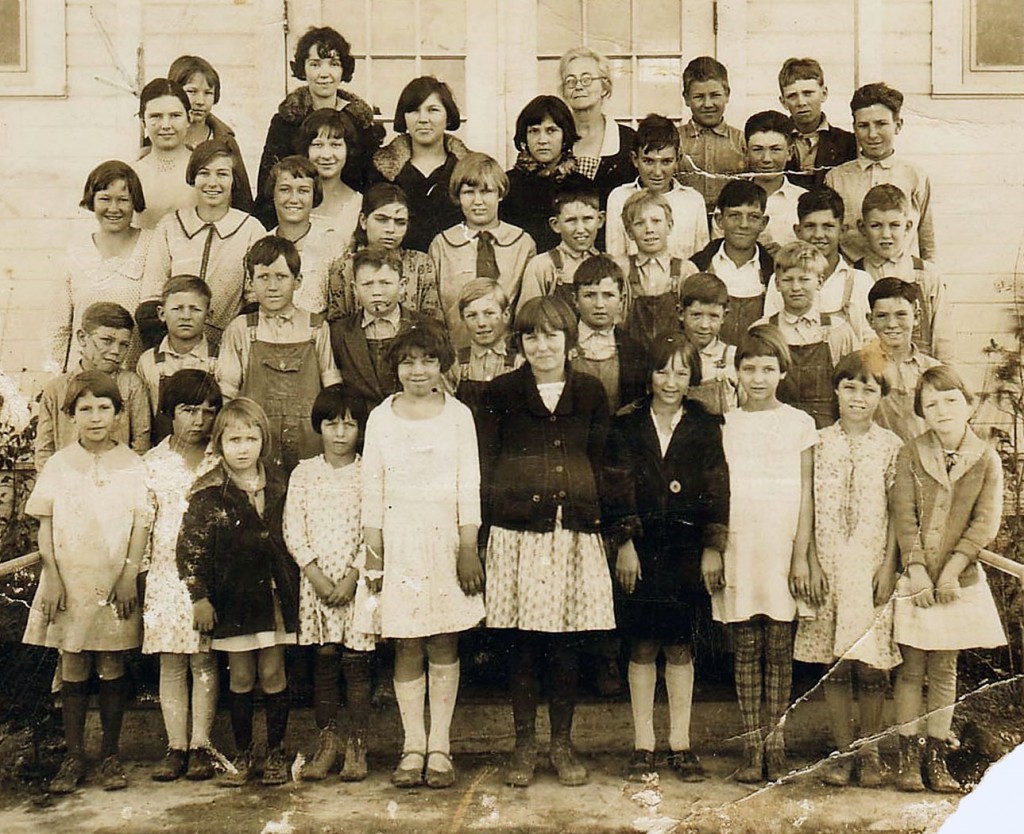Copyright 2011-2022 Susan Burneson. All rights reserved. Kindly talk with us before reproducing any website content.
Before Brentwood Elementary, Lamar Middle, and McCallum High, even before Allandale, Brentwood, and Crestview neighborhoods, there was Esperanza School.
We first learned about Esperanza in 2009 from two former Brentwood neighbors, Mickey Pease Bauer, who started school there, and Al Kirby. In 1936, Mickey’s family moved to a 14-acre farm which stretched from 6503 Burnet Lane east to Arroyo Seco. (And, except for a few months, she has lived in either Brentwood or Crestview ever since.) Mickey attended Esperanza for a short time in the mid-1930s. Al’s family moved to a farm on North Street, now part of Brentwood, in 1940, a year before the school closed. Later, we discovered other Esperanza students who owned businesses in the area—Mary Frances Bible Alexander and Odis Walker.
 Esperanza was one of the Travis County rural schools for children living outside the Austin city limits. The school was first built in 1866 on a site northwest of the Mopac and Spicewood Springs Road intersection. The original log structure is now part of Pioneer Village at Zilker Botanical Gardens in Austin. The building received a Texas Historical Marker in 1974.
Esperanza was one of the Travis County rural schools for children living outside the Austin city limits. The school was first built in 1866 on a site northwest of the Mopac and Spicewood Springs Road intersection. The original log structure is now part of Pioneer Village at Zilker Botanical Gardens in Austin. The building received a Texas Historical Marker in 1974.
In 1893, Esperanza School moved to a larger, one-room frame building on the northeast corner of today’s Romeria and Burnet Road (see photo of the school below). Burnet was called Upper Georgetown Road then, and the school was surrounded by open farmland and a handful of houses. The 1932 map, above, shows Esperanza School; the small solid squares are homes, and the east-west street to the south of Esperanza is today’s Koenig Lane. Al Kirby remembered that Big Bear, a popular grocery store first built in the late 1930s, was across Romeria from the school, on the north end of Northwest Shopping Center.
In the clip below, Mickey Bauer shares memories of Esperanza from the time she attended in the mid-1930s.
Another neighbor who attended Esperanza was Mary Frances Bible, who later married Jack Alexander. They owned Alexanders Nursery in Crestview for 38 years.
According to The Defender, a 1936 history of the Travis County rural schools, “Even though the name of [Esperanza School] is a Spanish word [meaning hope], there is no record of a Spanish or Mexican child ever attending the school,” and “The district has neither a Mexican nor a Negro school.” After a 1928 city plan established a “Negro district” in East Austin, segregation in general became more common for a number of decades. All the records and photos I have found, except one, indicate that only white children attended Esperanza.
The Travis County Hist orical Commission’s documentation of Esperanza School lists one child believed to be a student there—Altee McDade, age 10. The only Altee McDade I could find was born in Texas about 1924. He would have attended the Esperanza on today’s Burnet Road about 1934. Census records show that Altee was black and lived in East Austin, on Curve Street in 1930 and on East Fourth Street in 1940. The 1940 census also shows that he attended six years of school. According to the 1932 map, above, the closest black school was St. Johns, east of North Lamar and north of Airport. (Read more about St. Johns here.)
orical Commission’s documentation of Esperanza School lists one child believed to be a student there—Altee McDade, age 10. The only Altee McDade I could find was born in Texas about 1924. He would have attended the Esperanza on today’s Burnet Road about 1934. Census records show that Altee was black and lived in East Austin, on Curve Street in 1930 and on East Fourth Street in 1940. The 1940 census also shows that he attended six years of school. According to the 1932 map, above, the closest black school was St. Johns, east of North Lamar and north of Airport. (Read more about St. Johns here.)
From one room in 1893, the second Esperanza School was expanded to two rooms in 1922, then to three rooms in 1934. By 1941, enrollment had decreased, and Esperanza was closed by the Austin School Board. Al Kirby believed that Esperanza may have been one of the last rural schools in this part of Travis County.
Al attended Baker Elementary in Hyde Park. (Baker School was purchased from AISD by Alamo Drafthouse in 2017, restored in 2019 by Weiss Architecture, received historic zoning by the Austin Historic Landmark Commission in 2020, and was a featured site on the Preservation Austin annual tour April 30, 2022.) Later, area students went to Rosedale Elementary, built in 1947 on West 49th St. and then Brentwood Elementary, built in the early 1950s.
By the early 1950s, most of the 14 acres that once belonged to Mickey Bauer’s father, Frank E. Pease, was sold, and Brentwood Elementary and nearby homes were built on the land. The family kept a few acres, including the Pease home, at 6503 Burnet Lane, for almost 30 more years. (More about the Pease family and their farm here.)
In October 2014, James Roy Walker shared the photo below with Voices of the Violet Crown (click on it to see more detail). According to Louise Rader Carlson, the photo was taken at Esperanza School about 1923. Notes on the back of the photo include the following people:
Front row, left to right: third person, Louise Rader Carlson.
Row 2, left to right: third person, Frank Rader; last person, one of four Sunday boys.
Row 3, left to right: Irene Spillar, Itasca Scott (Lizzie Baker Walker’s niece), Lucille Rader Preece; last three, three Sunday boys.
Teachers: Mrs. Yelderman and Mrs. Spring.
James said that Odis Walker, his father, attended school at Esperanza but either wasn’t present the day the photo was taken or left the previous year. As a young man, Odis founded Walker Tire Company in 1934. For many years, it was located on North Lamar just north of Justin Lane. You might remember its tongue-in-cheek company slogan, “If it’s in stock, we’ve got it,” painted on the front window. You can read about Odis’s life here.
In the 1930s and 1940s, Thomas Jefferson Sunday Jr. owned a grocery store and filling station at Burnet Road and Northland Drive, the current location of Amy’s Ice Creams and Phil’s Icehouse. Mickey Bauer first told us about the store when we interviewed her. T. J. Sunday Jr. was the paternal grandfather of the four Sunday boys in the photo below. In the 1930 census, they are listed as Wilber, Alex, Robert, and Marvin, sons of John Alexander Sunday, a salesman with the City of Austin who lived with his family along Upper Georgetown Road (today’s Burnet Road), not far from where T. J., his wife, and John’s younger brother also lived.

